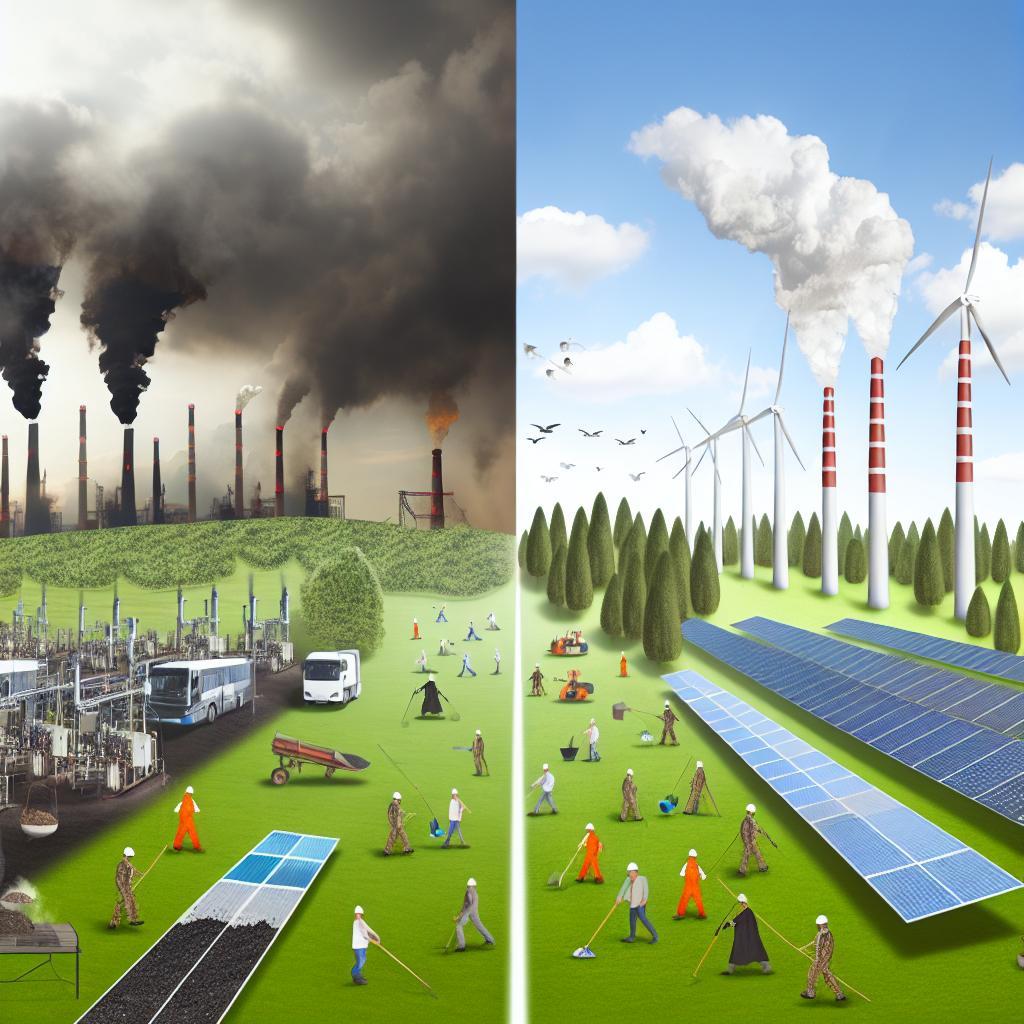
The Impact of Green Energy on Carbon Emissions
The ongoing shift towards green energy is a critical component in addressing the pressing issue of carbon emissions. Carbon emissions, primarily from burning fossil fuels, contribute to a variety of environmental issues, including climate change. By transitioning to renewable energy sources such as solar, wind, hydroelectric, and geothermal power, the global community can work collaboratively to mitigate the adverse effects of carbon emissions on the environment.
Understanding Carbon Emissions
Carbon emissions refer to the release of carbon compounds, especially carbon dioxide (CO2), into the atmosphere. The combustion of fossil fuels like coal, oil, and natural gas for electricity, heat, and transportation is a major source of these emissions. CO2 is a potent greenhouse gas, and its accumulation in the atmosphere is a primary factor in the greenhouse effect, which leads to global warming and climate change. To comprehend the scale of carbon emissions, it is essential to examine various datasets and reports provided by government bodies and environmental organizations, which track emissions and their sources extensively.
Green Energy Sources
A variety of green energy sources present viable alternatives to fossil fuels. Understanding these sources and their contributions to reducing carbon emissions is critical.
Solar Power: Solar energy harnesses sunlight to generate electricity through photovoltaic cells, also known as solar panels. Importantly, solar power produces zero CO2 emissions during operation. Recent advancements in photovoltaic technology have improved the efficiency of solar cells, making this energy source more economically viable and reducing the carbon footprint of manufacturing processes. The enhanced efficiency of solar technology has facilitated its proliferation, driving widespread adoption in residential, commercial, and industrial sectors.
Wind Power: Wind energy uses wind turbines to convert the kinetic energy of wind into electrical power. Among the renewable energy technologies, wind power stands out for its rapid growth and relatively low operational costs. Its scalability is a significant advantage, as wind farms can range from small local installations to extensive offshore projects. As with solar power, the operational phase of wind power is free from CO2 emissions, bolstering its role in combating climate change.
Hydroelectric Power: Hydroelectric energy capitalizes on the energy of flowing water, typically via large dams, to produce electricity. It generates negligible CO2 emissions during operation, although consideration must be given to the environmental implications of dam construction, such as ecosystem disruption and habitat alteration. Nevertheless, with proper planning and management, hydroelectric power can provide a reliable and sustainable energy source.
Geothermal Energy: Geothermal power exploits the Earth’s internal heat to produce a stable and dependable electricity supply. Unlike solar and wind, geothermal energy is less vulnerable to weather and environmental variability, offering continuous energy with low CO2 emissions. This characteristic makes geothermal a valuable component of the diverse array of renewable energy technologies seeking to displace fossil fuel reliance.
Benefits of Switching to Green Energy
Switching to green energy carries multifaceted benefits that extend beyond carbon emissions reduction. One major advantage is the enhancement of energy security. Renewable energy can decrease dependence on imported fossil fuels by diversifying the energy mix and reducing vulnerabilities associated with fluctuating fossil fuel markets. This autonomy can be particularly advantageous for countries lacking fossil fuel resources.
The shift to renewable energy also stimulates economic growth and job creation in emerging industries. As green technologies evolve and gain traction, they generate employment in research, manufacturing, installation, and maintenance sectors. Additionally, green energy supports broader sustainable development goals by promoting responsible stewardship of natural resources and fostering cleaner, more inclusive economic growth.
Energy Efficiency is a crucial adjunct to renewable energy implementation. Adopting energy-efficient technologies and practices can further shrink the carbon footprint. For instance, modernizing electrical grids to accommodate renewable energy and incorporating energy-efficient appliances into homes and businesses are effective ways to achieve substantial emission reductions. Efficiency efforts complement renewable energy initiatives by ensuring that less overall energy is needed to meet demands.
Challenges and Considerations
Despite the advantages of green energy, several challenges remain. The initial investment costs for renewable technologies like solar panels, wind turbines, and geothermal plants can be substantial. Yet these costs have generally trended downward, thanks to technological advances, increased competition, and economies of scale. Incentive programs and supportive policies can also help mitigate upfront expenses for consumers and businesses transitioning to renewable energy.
Another challenge is the inherent variability of certain renewable resources, such as solar and wind, which depend on weather conditions. To address this variability, advancements in energy storage solutions and grid management technologies are crucial. Battery systems, for instance, can store excess energy generated during peak production for use during periods of low generation, thereby ensuring a consistent and reliable power supply.
Conclusion
The transition to green energy serves as a cornerstone in reducing global carbon emissions and combating climate change. By investing in renewable technologies, societies can unlock substantial environmental, economic, and social benefits. The combined efforts to innovate, implement, and support green energy are vital steps towards achieving global climate goals and ensuring a sustainable future. Environmental think tanks and energy providers continually develop resources and tools, providing opportunities for individuals and organizations to engage further with green energy solutions. Whether pursuing incremental changes or comprehensive strategies, the path to a cleaner, greener world is one that requires collaboration, innovation, and enduring commitment.